 Image search results - "kure" Image search results - "kure" |
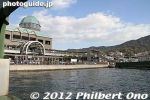
Kure Port in Hiroshima Prefecture. We arrived from Etajima island across the Seto Inland Sea. Kure is also a short train ride from Hiroshima Station.
|
|
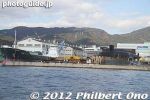
From the boat, we could see the dock where the Battleship Yamato was built in Kure, Hiroshima. "Kure" is pronounced "Kuray" not like the word "cure."
|
|
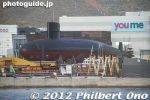
We could also see the submarine museum at the JMSDF Kure Museum adjacent to the Yamato Museum.
|
|
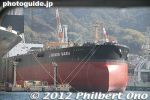
Kure is a major shipbuilding town.
|
|
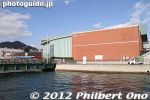
Back of the Yamato Museum facing Kure Port.
|
|
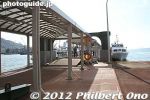
Kure Port dock.
|
|

Entering Kure Port terminal.
|
|

Welcome to Kure.
|
|
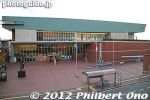
Yamato Museum's official name is Kure Maritime Museum. Although the 1/10 scale model of Battleship Yamato is the main attraction, it also has other exhibits explaining Kure's maritime history.
|
|

The Yamato Museum is open 9 am to 6 pm (enter by 5:30 pm). Admission is 500 yen for adults, 300 yen for high schoolers, and 200 yen for kids. Battleship Yamato was built in Kure.
|
|
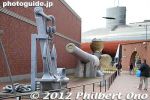
Outside the museum, a battleship gun and anchor are displayed.
|
|
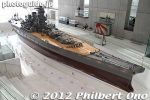
Yamato Museum's main attraction is this large scale model of Battleship Yamato. You can walk around it. This area of the museum is called Yamato Hiroba.
|
|
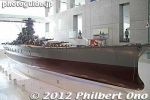
The scale model of the battleship is 26.3 meters long. It has been reconstructed as accurately as possible based on photographs and exploration of the wreck.
|
|
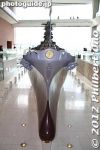
Battleship Yamato has an Imperial chrysanthemum crest on the bow. This was one of the things which helped to identify the wreck on the sea bottom.
|
|
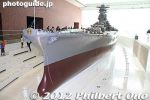
Battleship Yamato was commissioned a week after the Pearl Harbor attack in Dec. 1941. It was Japan's most powerful battleship and now legendary. It turned out to be great waste since the big guns were hardly used and it was sunk 4 years later.
|
|

"Yamato" is another name for Japan, and so it is a very revered and prestigious name for any ship. Many movies, anime, etc., have been based on Battleship Yamato which retains a strong cultural influence in Japan.
|
|
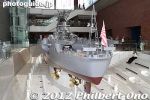
The Yamato's final mission was suicidal. It was ordered to go to Okinawa in April 1945 and beach herself offshore so it wouldn't sink. While beached, it would fire its guns at the enemy on Okinawa.
|
|
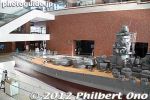
On her way to Okinawa, the Yamato was spotted by US submarines and aircraft and sunk by American carrier-based bombers and torpedo bombers on April 7, 1945.
|
|
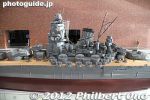
Since the Yamato was built in secrecy, there are very few clear photos of the ship.
|
|
|
|
|
|
|
|
|
|
|
|
|
|
|
|
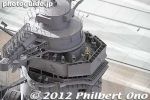
The model even has little human figures.
|
|
|
|
|
|
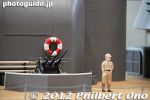
All aboard!
|
|
|
|
|
|
|
|
|
|
|
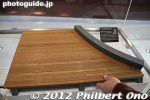
Sample wood paneling used for the model deck.
|
|
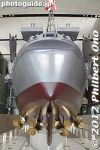
Propellers of Battleship Yamato.
|
|
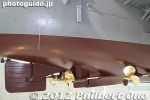
Rudder and propellers of Battleship Yamato.
|
|
|
|
|
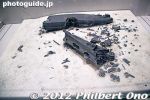
One exhibition room has a model of the Battleship Yamato wreck.
|
|

Admiral Isoroku Yamamoto's connection with Kure. On the bridge of the Yamato, he commanded the fleet at the Battle of Midway.
|
|
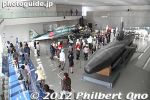
Another large exhibition room had a Japanese Zero fighter plane, kaiten manned torpedo, and midget submarine.
|
|
|
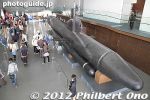
Midget submarine.
|
|
|
|
|
|
|
|
|
|
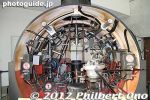
Midget submarine cockpit.
|
|
|
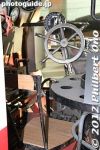
Midget submarine cockpit.
|
|

About midget submarines.
|
|
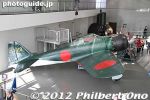
Japanese Zero fighter.
|
|
|
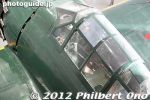
Japanese Zero fighter cockpit.
|
|
|
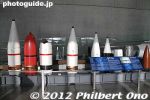
Gun shells
|
|
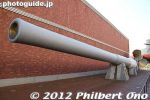
41-cm diameter gun from Battleship Mutsu, outside the Yamato Museum. Until the Yamato was built, the Mutsu was Japan's largest battleship.
|
|

Battleship Mutsu plaque. After seeing the Yamato Museum, be sure to cross the street over to the submarine museum called the JMSDF (Japan Maritime Self-Defense Force) Kure Museum.
|
|
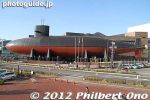
The JMSDF (Japan Maritime Self-Defense Force) Kure Museum is mainly a submarine museum whose main attraction is the decommissioned Japanese sub called Akishio. The museum is conveniently right across the street from the Yamato Museum.
|
|
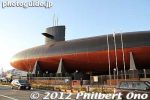
The former Akishio submarine just stands out and can be seen from boats approaching Kure Port. Very impressive to be seen on land amid small cars passing by. The museum is a short walk from JR Kure Station.
|
|
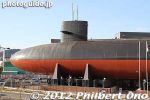
The museum has one normal building and this decommissioned submarine accessible from the main museum building. The submarine is largely intact on the inside.
|
|
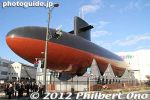
The Akishio submarine was commissioned in March 1986 and decommissioned in March 2004. It was brought here in 2006. The sub is 76.2 meters long. Top speed was 20 knots underwater.
|
|
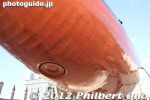
The JMSDF Kure Museum is JMSDF's submarine and minesweeping museum. It also has a surface ship museum in Sasebo, Nagasaki and an aircraft museum in Kanoya, Kagoshima.
|
|
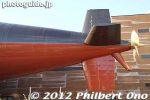
JMSDF Kure Museum is open 9 am to 5 pm (enter by 4:30 pm). Closed Tue. (open if a national holiday and closed on the Wed. instead). Free admission. Rudder and propeller of the Akishio submarine.
|
|
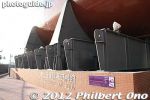
Looks sturdy enough so the sub won't roll away in a large earthquake.
|
|
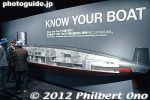
The museum's main building has exhibits explaining about Japanese submarines.
|
|
|
|
|
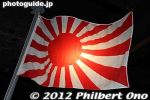
Flag of the Japanese navy.
|
|

Japanese submarine classes.
|
|

Model of the SS Kuroshio sub.
|
|
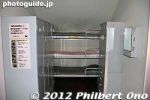
Replica of submarine sleeping quarters.
|
|
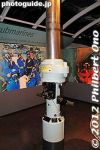
Periscope replica.
|
|
|
|
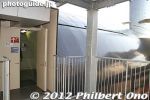
From the main building, we can cross over to the Akishio submarine.
|
|
|
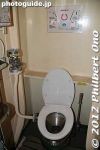
Toilet on the Akishio submarine.
|
|
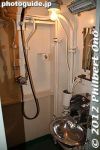
Shower and toilet sink on the Akishio.
|
|
|
|
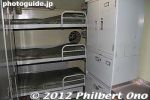
Sleeping quarters on the Akishio submarine.
|
|
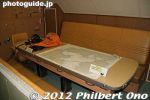
Conference room.
|
|
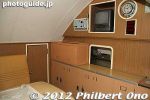
Conference room.
|
|
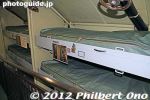
Bunk beds are short and narrow. Two men share one bunk bed as they sleep in turns.
|
|
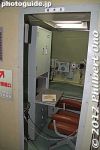
Captain's quarters. Still pretty cramped.
|
|
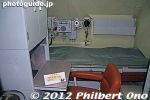
Captain's quarters. Outfitted with some communications gear at his bedside.
|
|
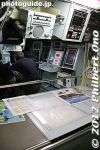
The bridge.
|
|
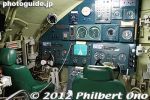
Pilot seats.
|
|
|
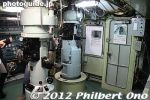
Two periscopes.
|
|
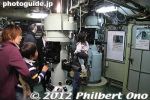
We could look through the periscopes.
|
|
|
|
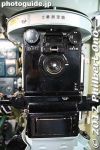
Periscopes made by Nikon?
|
|
|
|
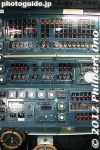
Looks very complicated.
|
|
|
|
|
|
|